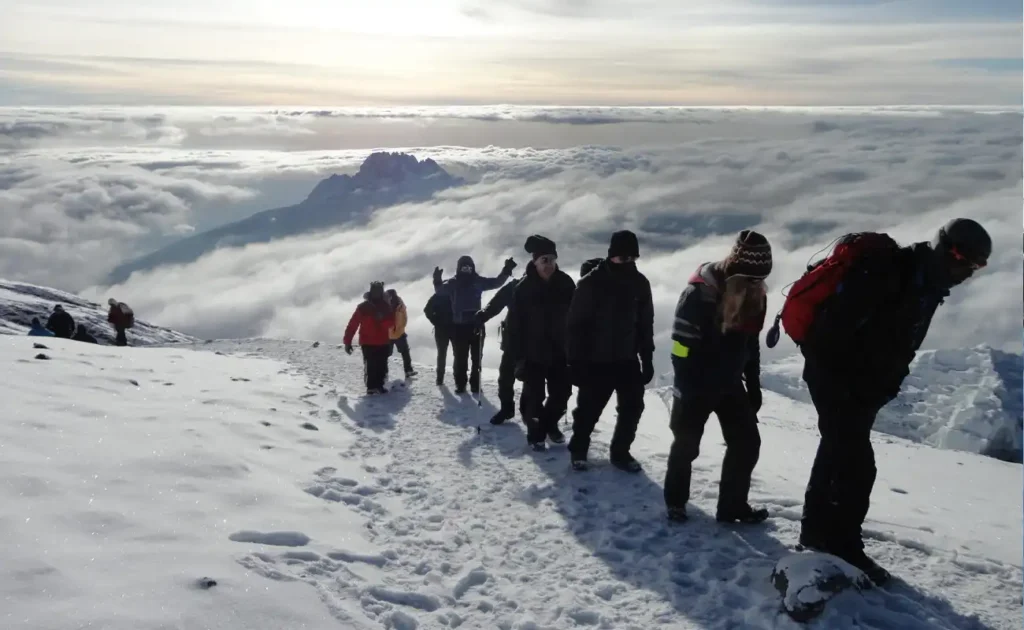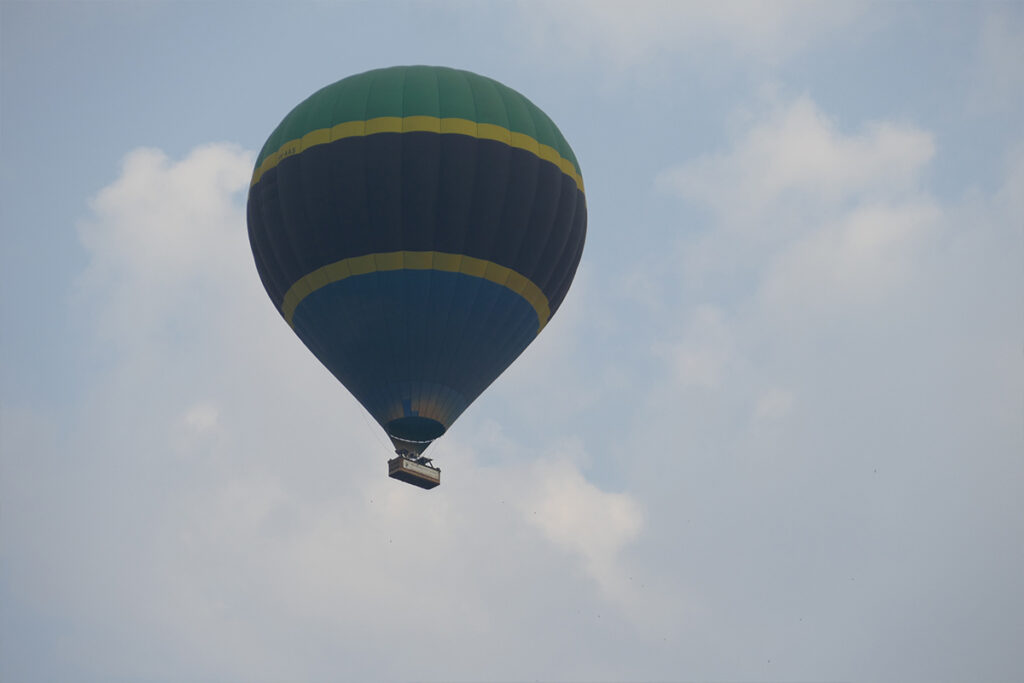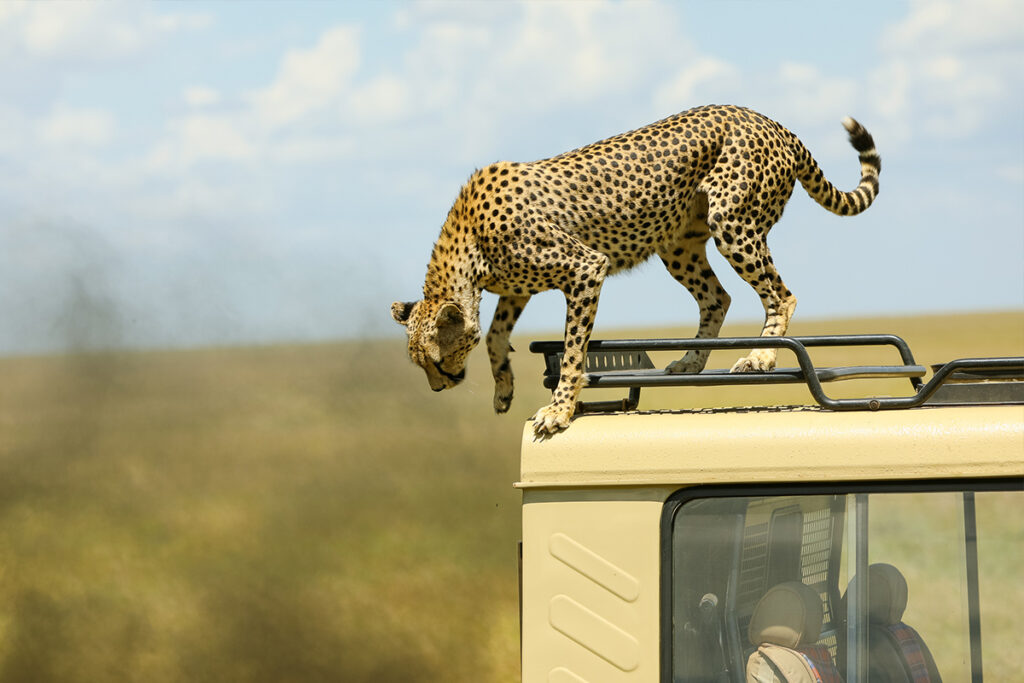With over 400 bird species calling it home, the Udzungwa Mountains is a hiking destination unlike any other. Tucked away in Tanzania, this expanse of lush forests and rugged terrain provides an exhilarating challenge for even the most seasoned hikers. The biodiversity and scenic vistas create a perfect blend of adventure and nature observation.
The Udzungwa Mountains form part of the Eastern Arc Mountains and are recognized for their exceptional biodiversity. Established as a national park in 1992, this area now attracts roughly 3,000 hikers annually, indicating its rising popularity within the hiking community. Steeped in history and natural beauty, hiking here offers an immersive experience into one of Tanzania’s pristine environments.

Udzungwa Mountains Hiking Experience
The Udzungwa Mountains hiking experience is an adventure like no other. With its sprawling forests and diverse wildlife, hikers are guaranteed a memorable trek. Imagine walking through trails where monkeys swing from trees and rare birds sing melodious tunes. Each step taken offers a new discovery, a glimpse of nature’s untouched beauty. The lush greenery and refreshing waterfalls add to the scenic charm.
Hiking through Udzungwa allows you to encounter numerous plant species, some of which are unique to this region. These mountains form part of the Eastern Arc, an area renowned for its incredible biodiversity. According to the article, these mountains house over 400 bird species, making it a haven for birdwatchers. You might also spot elusive mammals like the Iringa red colobus monkey. Nature lovers are in for a treat with every hike.
Adventure seekers will find multiple trails tailored to different skill levels. The trails range from easy walks to challenging climbs, ensuring everyone can find a suitable path. For the more experienced hiker, the trek to the Sanje Waterfall is a must-see. This three-tiered waterfall offers breathtaking views and a perfect spot to rest and recharge. Whether you’re a novice or a pro, the Udzungwa Mountains cater to all.
Visiting the Udzungwa Mountains is not just about physical activity; it’s an immersive nature experience. Here, you’ll learn about the region’s historical significance and cultural heritage. Guided tours offer insights into local traditions and conservation efforts. Here is the article describing the importance of preserving these natural wonders for future generations. Hiking these trails, you’re not only taking a journey through landscapes but also through time and culture.
Adventure and Biodiversity: Uniqueness of Hiking in Udzungwa
Hiking in the Udzungwa Mountains offers a perfect blend of adventure and biodiversity. This unique combination draws hikers from across the globe seeking both thrill and nature. Every turn on the trail can lead to encounters with rare species and spectacular views. Imagine standing at the edge of a high waterfall, surrounded by vibrant green foliage. The sense of discovery keeps adventurers coming back.
The biodiversity in Udzungwa is awe-inspiring. Over 2,500 plant species thrive here, some found nowhere else on Earth. According to experts, this rich biodiversity is crucial for ecological research. Hikers often spot medicinal plants and vibrant flowers. The variety of species in the region makes every hike a new learning experience.
Unique wildlife sightings add to the hiking adventure. The Udzungwa forests are home to several endemic bird species. Birdwatchers relish the chance to spot the Udzungwa partridge and Rufous-winged sunbird. Additionally, the forests are inhabited by the rare Udzungwa red colobus monkey. Each sighting adds to the excitement and uniqueness of the trek.
List of Unique Species
- Udzungwa red colobus monkey
- Udzungwa partridge
- Rufous-winged sunbird
- 2,500+ plant species
The diverse flora and fauna make Udzungwa a premier destination for nature enthusiasts. Each hike through different trails reveals the region’s ecological treasures. It broadens perspectives and deepens appreciation for conservation efforts. Adventure and biodiversity truly converge here, offering an unforgettable hiking experience.
Recognizing Udzungwa Mountains’ Exceptional Biodiversity
The Udzungwa Mountains are renowned for their exceptional biodiversity. Nestled in Tanzania, this region boasts a variety of ecosystems. These include rainforests, grasslands, and mountain peaks. Such diversity supports countless species, creating a haven for wildlife. Conservationists stress the importance of protecting these ecosystems.
The plant life in Udzungwa is astounding. With over 2,500 plant species, including many endemic ones, the richness of flora is evident. Scientists regularly study these plants to understand their ecological roles. These studies reveal their importance to both local communities and global biodiversity. Protecting these plants is vital to maintaining the area’s ecological balance.
Rich animal life also thrives in these mountains. The area shelters unique primates like the Iringa red colobus monkey. Bird species such as the Udzungwa partridge add to the region’s avian diversity. The forests house several small mammals and reptiles too. This blend of wildlife makes the Udzungwa Mountains a hotspot for biodiversity enthusiasts.
Table of Notable Wildlife
| Species | Category |
|---|---|
| Iringa red colobus | Primate |
| Udzungwa partridge | Bird |
| Lesser galago | Mammal |
| Peters’ elephantnose fish | Fish |
The table highlights some unique species found in Udzungwa. Recognizing these species helps underscore the mountain’s critical role in global biodiversity. Preservation efforts continue to ensure these species thrive for future generations. Understanding and appreciating this biodiversity is crucial for effective conservation.
Udzungwa National Park: The breathtaking destination for Hikers
Udzungwa National Park is a spectacular destination that captivates hikers with its vast landscapes and rich biodiversity. Located in Tanzania, it covers an area of approximately 1,990 square kilometers. Hikers trek through lush rainforests, climb steep escarpments, and navigate through picturesque valleys. The diverse trails offer a range of experiences for both novice and experienced hikers. The chance to explore pristine nature makes every moment in the park memorable.
One of the highlights for hikers is the breathtaking Sanje Waterfall. Standing 170 meters tall, it is one of the highest waterfalls in Tanzania. Hikers can enjoy a challenging trek to reach its base, where the sheer power and beauty of the cascading water amaze them. This is a popular spot for taking stunning photographs or cooling off in the refreshing spray. The hike to the waterfall is well worth the effort for the panoramic views it offers.
The park’s appeal lies not just in its natural beauty but also in its incredible wildlife. It is home to several rare and endemic species of primates, including the Udzungwa red colobus. Bird enthusiasts also flock here to spot various unique bird species. The diverse animal life enriches the hiking experience. Observing animals in their natural habitat adds a thrilling dimension to the adventure.
Table of Notable Trails
| Trail | Length | Difficulty |
|---|---|---|
| Sanje Waterfall Trail | 4 km | Moderate |
| Prince Bernhard Trail | 5 km | Challenging |
| Ruipa River Trail | 20 km | Easy to Moderate |
The table showcases notable trails in Udzungwa, revealing the range of trails available for different skill levels. With diverse paths and majestic views, Udzungwa is undoubtedly a premier hiking destination. Each trail invites explorers to witness the majestic beauty of Tanzania’s landscapes. As they wander the trails, hikers become part of a world rich in life and natural wonders.
Visitors also have opportunities to engage with local communities. Cultural tours offer insights into the heritage and traditions of the people living near the park. This exchange enriches the hiking adventure, providing deeper understanding and appreciation. Through these interactions, visitors gain unique perspectives on life in this vibrant region. Such experiences make a trip to Udzungwa National Park truly unforgettable.
Rising Popularity of Udzungwa Mountains Among Hikers
The Udzungwa Mountains are quickly becoming a favorite spot for hikers from around the world. With their impressive landscapes and unique wildlife, more adventurers are drawn to this Tanzanian gem. The park’s well-maintained trails cater to all skill levels, offering both beginners and seasoned trekkers a memorable journey. The diverse environments make each hike an exceptional experience. Access to such rich natural beauty has spurred a hike in visitor numbers.
A big reason for Udzungwa’s popularity is its range of hiking trails. From easy paths that meander through the forest to challenging mountain climbs, there’s something for everyone. A variety of lengths and difficulty levels ensures that every hiker finds a trail that suits their preferences. The Sanje Waterfall trail remains a popular choice due to its stunning views. Each trail introduces hikers to a different aspect of the mountains’ allure.
Recent visitor statistics paint a clear picture of the park’s growing appeal.
| Year | Visitors |
|---|---|
| 2018 | 2,500 |
| 2019 | 3,100 |
| 2020 | 3,800 |
| 2021 | 4,500 |
The steady rise in visitor numbers demonstrates the mountains’ increasing draw. More travelers are adding Udzungwa to their lists of must-visit destinations. This rise is a testament to its status as a premier hiking location.
The park’s conservation efforts play a significant role in maintaining its natural charm. By preserving the unique flora and fauna, the park ensures that it remains a haven for wildlife and a treasure for hikers. The commitment to conservation also draws those interested in ecology and sustainability. These efforts help protect the environment and provide educational opportunities for visitors. Experiencing the park’s pristine beauty firsthand leaves a lasting impression on every hiker.
For those seeking both adventure and a deeper connection with nature, Udzungwa Mountains offer an unparalleled experience. The area’s growing popularity reflects its ability to enchant and inspire. Each visitor becomes part of an enduring story, one that celebrates natural splendor and human discovery. As more people explore these captivating mountains, the world learns more about its wonders. The Udzungwa Mountains truly offer a journey worth taking.
Immersing In The Udzungwa Mountains: What makes it a Premium Hiking Stop
The Udzungwa Mountains offer an unparalleled hiking experience that attracts adventurers from across the globe. The breathtaking views, combined with diverse wildlife and unique plant species, make this destination a premium choice. Hikers can explore trails that range from gentle slopes to challenging ascents. Picturesque waterfalls, lush forests, and panoramic vistas greet visitors at every turn. The natural beauty and serenity of the mountains provide a perfect escape from daily life.
The mountain range is home to a variety of ecosystems, enhancing the hiking experience. Each ecosystem supports different types of flora and fauna, adding layers of interest to treks. Hikers can encounter rainforests, bamboo groves, and alpine meadows. The constantly changing scenery keeps the journey dynamic and engaging. These diverse environments also support rare and endemic species, making each hike a unique adventure.
Wildlife enthusiasts will find the Udzungwa Mountains particularly rewarding.
- Udzungwa red colobus monkey
- Iringa red colobus monkey
- Rufous-winged sunbird
- Mountain dwarf gecko
This list highlights some of the unique species that inhabit the area. Spotting these animals in their natural habitat adds excitement and wonder to the hiking experience. The richness of biodiversity makes Udzungwa an ideal spot for nature observation.
Additionally, the Udzungwa Mountains are steeped in cultural history. Local communities have lived here for centuries, and hikers can learn about their traditions and ways of life. Guided tours often incorporate visits to local villages, providing insights into their customs. These cultural interactions enrich the hiking experience, offering a deeper understanding of the region. It’s a chance to connect with the people and stories that shape this remarkable place.
The park’s excellent infrastructure further elevates its status as a premium hiking stop. Well-marked trails, guided tours, and visitor centers ensure a safe and informative experience. Efforts to maintain the trails and preserve the environment are evident throughout the park. This commitment to quality attracts hikers who seek both adventure and responsible tourism. A hike in the Udzungwa Mountains promises not just scenic beauty but also a well-rounded and fulfilling journey.

Frequently Asked Questions
Udzungwa Mountains offer a captivating blend of adventure and natural beauty. Here are some common queries to assist you in planning your journey.
1. What wildlife can be seen in the Udzungwa Mountains?
In the Udzungwa Mountains, hikers can witness a remarkable array of wildlife. The park is home to the renowned Udzungwa red colobus monkey and the Iringa red colobus, both endemic to the area. Birdwatchers will be delighted by the sight of the Udzungwa partridge and the Rufous-winged sunbird, among hundreds of other bird species.
Additionally, the mountains are inhabited by various reptiles and lesser-known mammals. This diverse wildlife contributes to the region’s status as a biodiversity hotspot, making each hike a unique adventure. Observing these creatures in their natural habitat offers an unmatched experience for nature lovers.
2. How can I prepare for a hike in the Udzungwa Mountains?
Preparing for a hike in the Udzungwa Mountains requires a few essential steps. First, ensure you have the proper gear, like sturdy hiking shoes, a hat, and a water bottle. Check the weather forecast and pack accordingly, keeping in mind that the area receives substantial rainfall.
Another critical aspect is obtaining a map or hiring a local guide, as they offer invaluable insight into the trails and wildlife. Remember to pace yourself, and take breaks to appreciate the stunning landscapes. By covering these bases, you are set for a rewarding and memorable adventure.
3. Are there any cultural sites to visit near the Udzungwa Mountains?
Exploring the Udzungwa Mountains also offers opportunities to delve into the region’s rich cultural heritage. Visitors can engage with local communities, learning about their traditions and customs. These interactions enhance the hiking experience, providing a glimpse into the lives of the people who call this area home.
Nearby villages often welcome hikers and tourists, offering guided tours and cultural experiences. This unique blend of adventure and cultural immersion makes a trip to the Udzungwa Mountains even more rewarding. Each interaction helps to paint a broader picture of the area’s historical significance.
4. When is the best time to hike in the Udzungwa Mountains?
The ideal time to hike in the Udzungwa Mountains is during the dry seasons, typically from June to October and January to February. These periods provide more accessible trails and a comfortable hiking climate. Clear skies and manageable temperatures enhance the experience, allowing hikers to immerse themselves in the natural beauty.
During the rainy season, trails can become slippery and challenging. However, the lush vegetation and fullness of the waterfalls during this time offer a different but equally remarkable experience. Regardless of when you visit, prepare appropriately to make the most of your adventure.
5. How do conservation efforts impact the Udzungwa Mountains?
Conservation efforts play a vital role in preserving the biodiversity of the Udzungwa Mountains. By protecting habitats and species, these efforts ensure the area’s natural beauty remains intact for future generations. This attracts ecotourists and researchers, keen to study and experience the park’s rich flora and fauna.
Local communities and conservation organizations often collaborate, promoting sustainable tourism and protecting resources. By raising awareness and fostering engagement, these initiatives benefit both the environment and the people living nearby. This sustainable approach highlights the importance of balancing ecological preservation with human activity.



